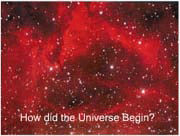It’s being touted as “a Genesis machine” – the Large Hadron Collider, which on Tuesday forced two proton beams to cross in an effort to bring scientists one "huge step" closer to seeing how the creation of the universe might have looked like.
With the record-shattering collision energies created Tuesday, scientists say the hunt has officially begun for dark matter, new forces, new dimensions and the Higgs boson, a hypothetical particle — often called the God particle — that scientists theorize gives mass to other particles and thus to other objects and creatures in the universe.
They say results from Tuesday’s proton collisions by the world’s largest atom smasher and the upcoming lead-ion collisions later this year will give them new insights into the nature of the strong interaction and the evolution of matter in the early Universe.
“We’ll address soon some of the major puzzles of modern physics like the origin of mass, the grand unification of forces and the presence of abundant dark matter in the universe,” reported Guido Tonelli, spokesperson of the Compact Muon Solenoid(CMS) experiment, one LHC’s four major experiments. “I expect very exciting times in front of us.”
For over 15 years, scientists have been looking forward to using the LHC to accelerate two beams of protons to near light speed around its 17-mile chamber and then smash the particles into each other in hopes of creating concentrations of energy which they believe would mimic the seconds after the Big Bang.
As soon as they have "re-discovered" the known Standard Model particles, a necessary precursor to looking for new physics, the LHC experiments will start the systematic search for the Higgs boson with the hope of gaining insights into the nature of the strong interaction and the evolution of matter in the early Universe..
|
An International Missionary Outreach Dedicated to Evangelizing the Lost By Sharing The Gospel According to the Scriptures
|

Goals And Objectives
Statement Of Faith
History Of Ministry
Speaking Schedule
Letters To The Ministry
Ministry Updates
 |
|

|
Overview Of Mission South Africa |
|
 |
|
|
|



